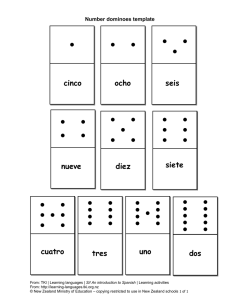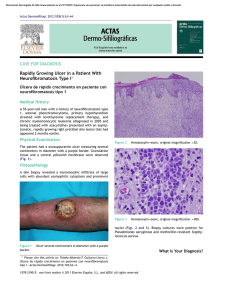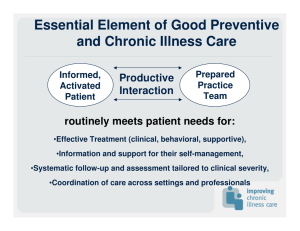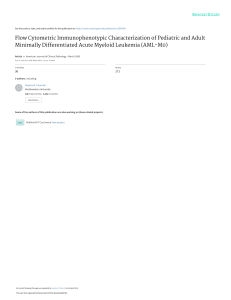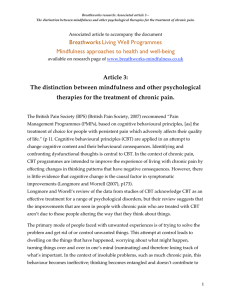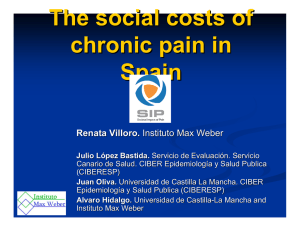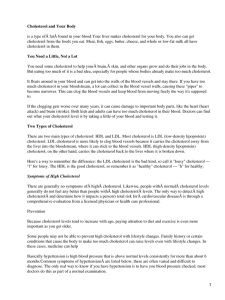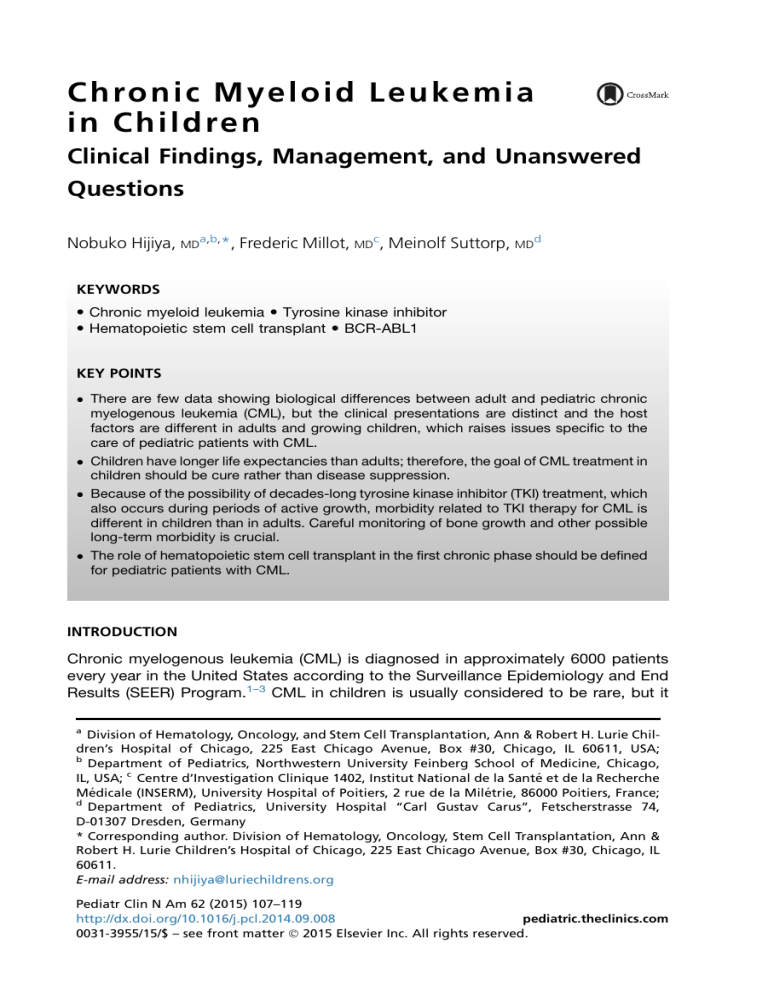
C h ro n i c M y e l o i d Le u k e m i a in Children Clinical Findings, Management, and Unanswered Questions Nobuko Hijiya, MDa,b,*, Frederic Millot, MDc, Meinolf Suttorp, MDd KEYWORDS Chronic myeloid leukemia Tyrosine kinase inhibitor Hematopoietic stem cell transplant BCR-ABL1 KEY POINTS There are few data showing biological differences between adult and pediatric chronic myelogenous leukemia (CML), but the clinical presentations are distinct and the host factors are different in adults and growing children, which raises issues specific to the care of pediatric patients with CML. Children have longer life expectancies than adults; therefore, the goal of CML treatment in children should be cure rather than disease suppression. Because of the possibility of decades-long tyrosine kinase inhibitor (TKI) treatment, which also occurs during periods of active growth, morbidity related to TKI therapy for CML is different in children than in adults. Careful monitoring of bone growth and other possible long-term morbidity is crucial. The role of hematopoietic stem cell transplant in the first chronic phase should be defined for pediatric patients with CML. INTRODUCTION Chronic myelogenous leukemia (CML) is diagnosed in approximately 6000 patients every year in the United States according to the Surveillance Epidemiology and End Results (SEER) Program.1–3 CML in children is usually considered to be rare, but it a Division of Hematology, Oncology, and Stem Cell Transplantation, Ann & Robert H. Lurie Children’s Hospital of Chicago, 225 East Chicago Avenue, Box #30, Chicago, IL 60611, USA; b Department of Pediatrics, Northwestern University Feinberg School of Medicine, Chicago, IL, USA; c Centre d’Investigation Clinique 1402, Institut National de la Santé et de la Recherche Médicale (INSERM), University Hospital of Poitiers, 2 rue de la Milétrie, 86000 Poitiers, France; d Department of Pediatrics, University Hospital “Carl Gustav Carus”, Fetscherstrasse 74, D-01307 Dresden, Germany * Corresponding author. Division of Hematology, Oncology, Stem Cell Transplantation, Ann & Robert H. Lurie Children’s Hospital of Chicago, 225 East Chicago Avenue, Box #30, Chicago, IL 60611. E-mail address: nhijiya@luriechildrens.org Pediatr Clin N Am 62 (2015) 107–119 http://dx.doi.org/10.1016/j.pcl.2014.09.008 pediatric.theclinics.com 0031-3955/15/$ – see front matter Ó 2015 Elsevier Inc. All rights reserved. 108 Hijiya et al accounts for 10% to 15% of myeloid leukemia and is more common than acute promyelocytic leukemia, which accounts for 5% to 10% of cases. At one time, hematopoietic stem cell transplant (HSCT) was the only curative treatment of CML in children as well as in adults; however, the treatment landscape has changed drastically over the last 15 years since the introduction of the tyrosine kinase inhibitor (TKI) imatinib.4–6 Continuing TKI treatment indefinitely has become standard practice for adult patients in chronic phase (CP), and the feasibility of discontinuing TKI therapy in patients in deep molecular remission has been studied.7 However, because of a lack of data from large clinical studies, standardized treatment and interventions have not been established in the pediatric CML population. This article discusses some controversial issues and unanswered questions (Table 1), as well as current recommendations, in the management of pediatric CML (Boxes 1 and 2, Fig. 1). Table 1 Unanswered questions and issues specific to pediatric CML Issues and Questions Notes Children have longer life expectancy than adults No studies have proved the efficacy of TKIs to suppress disease beyond 15 y There may be unexpected morbidities after decades of TKI treatment Morbidities from TKIs in children are different from those in adults Children require multiple decades of TKI treatment TKIs cause growth disturbances There is no human study showing the effect of TKIs on the future fertility of young children Immune dysfunction, thyroid, cardiac, vascular, and liver toxicities have been reported in adults, but there are no long-term data in children Treatment should be designed for cure, rather than suppression, of the disease New agents that target leukemic stem cells or overcome TKI resistance may be particularly helpful in pediatric patients HSCT may still play a role in children in first CP The outcome of HSCT is better in children in general HSCT may provide sustained remission or cure by eradicating leukemic stem cells Recent techniques such as reduced-intensity conditioning may be effective There are very few large studies on long-term outcomes and morbidity of HSCT for CML Very late relapse is possible Efficacy of newer TKIs has not been validated There are ongoing phase 2 studies of 2G TKIs Pediatric-specific treatment guidelines are lacking Modification of ELN and NCCN guidelines may be needed Recommendations from the I-BFM study group based on adult data have been published International harmonization is needed CML scoring system has not been validated in children Sokal, Hasford, and EUTOS scores are not reliable in children Prognostic value of early response and kinetics of BCR-ABL1 transcript ratio need to be validated in children Abbreviations: 2G, second generation; ELN, European Leukemia Net; iBFM, international BerlinFrankfurt-Münster study group; NCCN, National Comprehensive Cancer Network. Chronic Myeloid Leukemia in Children Box 1 Recommended tests to monitor disease status At diagnosis: 1. Bone marrow (cytogenetics, FISH) 2. Qualitative PCR for BCR-ABL1 3. Consider HLA typing of the patient and siblings During TKI treatment: 1. Bone marrow every 3 months until complete cytogenetic remission (no Philadelphia chromosome is identified) 2. RQ-PCR by peripheral blood every 3 months 3. BCR-ABL1 mutation analysis if response is not optimal Abbreviations: FISH, fluorescence in situ hybridization; HLA, human leukocyte antigen; RQ-PCR, real-time quantitative polymerase chain reaction. DIFFERENCES IN CHRONIC MYELOGENOUS LEUKEMIA CLINICAL PRESENTATION IN CHILDREN AND ADULTS There are some differences in the clinical presentation of CML at diagnosis in children and adults, which suggests different underlying biology. The median baseline white blood cell count (WBC) in adult patients with CML ranges from 80 109/L to 150 109/L,8–10 but is higher in children with CML; WBC was reported to be approximately 250 109/L in an international registry of 200 children with CML (median age, 11.6 years; range, 8 months to 18 years).11 Compared with older adults, adolescents and young adults (16–29 years) also present with higher WBC as well as other aggressive disease features (larger spleen, higher peripheral blast counts, and lower hemoglobin levels), although one study showed similar outcomes.12 Another study showed less favorable cytogenetic and molecular response rates and a trend for shorter event-free survival in a similar age group (15–29 years) of patients with CML compared with older adults, although overall survival rates were not different.13 The median size of the spleen is 8 cm below the costal margin (range, 0–25 cm)11 in children, which is not very different from adults.14 However, the agebased normal size of the spleen in children is smaller than in adults; therefore, Box 2 Recommended monitoring of morbidities and supportive care Height, weight and Tanner staging on every visit. If there are abnormal patterns, consult endocrinology and consider bone age and DEXA scan. Thyroid function after 4 to 6 weeks of TKI and repeat thereafter periodically. Echocardiogram and ECG annually. Inactivated vaccines may be given anytime during TKI treatment, although efficacy is not confirmed. Live vaccines are not recommended during TKI therapy. May be given after discontinuing TKI for several weeks when the patient is in deep molecular response. Abbreviations: ECG, electrocardiogram; DEXA, dual-energy X-ray absorptiometry. 109 110 Hijiya et al Fig. 1. Algorithm of recommended treatment of pediatric CML in first CP. a Secondgeneration (2G) TKI, if a study is available. b Ponatinib, if available for children. ELN, European Leukemia Net; HLA, human leukocyte antigen; NCCN, National Comprehensive Cancer Network; PCR, polymerase chain reaction; TKD, BCR-ABL1 tyrosine kinase domain. children have proportionally larger spleens. Advanced phases of CML (accelerated phase [AP] or blast crisis [BC]) seem to be diagnosed more frequently in children than in adults.11,15–17 Given the differences in clinical presentation and the wide gap in the prevalence of CML in children and adults, it is possible that different mechanisms account for the pathogenesis in each age group; however, to date there are few data to support this idea.18 ISSUES IN PEDIATRIC CHRONIC MYELOGENOUS LEUKEMIA Lack of Standard Guidelines and Prognostic Scores in Children There are no standard guidelines in pediatric CML such as those produced by the National Comprehensive Cancer Network (NCCN)19 and European Leukemia Net (ELN)20 for adults; thus, many pediatric oncologists follow guidelines that are designed for adult patients. However, there are several issues unique to children with CML that need to be carefully considered. Various prognostic scores (eg, Sokal,21 Hasford,8 and Eutos22 scores) based on clinical and biological features at diagnosis predict the outcomes of adult patients with CML treated with chemotherapy,21 interferon,8 or imatinib,22 but the validity of these scores has not been established in the pediatric population. For instance, the Sokal score21 uses age, spleen size, platelet counts, and blast count. Using this score, a 10-year-old with CML would have a lower risk of mortality than a 70-year-old patient if they had the same spleen size and blood cell counts, but in practice this is not always true. Suttorp and colleagues23 evaluated the 3 scores and a Sokal young score24 in 90 children with CML (median age, 11.6 years; range, 1–18 years) who were treated with Chronic Myeloid Leukemia in Children imatinib, and prognostic scores were inconsistent in children and did not predict poor response at 3 months. More recently, cytogenetic and molecular responses to TKI therapy have been used as prognostic markers. NCCN19 and ELN20 guidelines use TKI responses at 3, 6, and 12 months to define treatment failure or to recommend change of treatment. The prognostic value of early TKI response and kinetics of BCR-ABL1 have been also described25,26 but they need to be evaluated in pediatric patients with CML. Cure or Suppression of Disease? Whether or not CML in children is different from adult disease is debatable, but the host factors are different in these two patient populations and may inform treatment goals. Cure of disease is ideal for any age group, but an acceptable goal of treatment in adults, especially in older patients, may be to maintain CP for a few decades with TKI.27,28 If older patients remain BCR-ABL1–positive by real-time quantitative reverse transcription polymerase chain reaction, but are in CP with TKI, they can expect a good quality of life for many years. In contrast, children have a much longer life expectancy, and there are no data on the long-term efficacy of TKI beyond 15 years. If children with CML continue TKI treatment and remain in CP, they may still develop resistance and progress to AP/BC after decades. Noncompliance with TKI is also more prevalent in adolescents and young adults compared with older adults or younger children,29,30 which makes decades-long use of TKI a less attractive option in these patients. Continuing TKI indefinitely can also cause long-term morbidities in children and, over decades, the cost of TKI becomes significant28 and may also preclude adherence as reported in adults.31 When pediatric patients with CML enter young adulthood, they face impaired quality-of-life issues related to TKI therapy, which are reported to be significantly worse in the young adult population compared with the older adult population.32 One potential solution is to stop TKIs after a period of undetectable BCRABL1.7,28,33–35 The prospective Stop Imatinib (STIM) study evaluated the feasibility of discontinuing imatinib in patients 18 years of age or older who remained in complete molecular response (CMR) for at least 2 years while on imatinib.7 Sixty-nine of 100 patients enrolled had median follow-up of 24 months (range, 13–30 months) and 42 of 69 patients (61%) experienced relapse; however, all patients who had molecular relapse responded to reintroduction of imatinib. Despite these studies, there is limited information on the longer-term (beyond 5 years) outcomes of patients with CML in CMR after cessation of imatinib.7,34,35 Although BCR-ABL1 can be persistent without progression of disease for several years,36 it is also possible that children in CMR may experience molecular relapse after a longer period of time following TKI discontinuation. However, reintroduction of TKI may bring them back to molecular remission.7,34 The concept of intermittent TKI dosing37 to reduce the long-term side effects of TKI and financial burden is intriguing in this regard.38 There are several potential therapeutic targets and agents under development that potentially overcome TKI resistance or eradicate CML stem cells, which may achieve cure. These targets and agents include interferon-alfa39 and components of the JAK/ STAT,40,41 Hedgehog,41 and Wnt/b-catenin signaling pathways41; early-phase studies are ongoing. Immunologic approaches27 like tumor cell–derived peptide vaccination42,43 may represent other reasonable strategies to cure CML in the future. New treatment options, particularly those intended to cure, are potentially more beneficial for children than for adults; therefore, it is critical that pediatric studies are pursued as part of the clinical development process. 111 112 Hijiya et al Hematopoietic Stem Cell Transplant for Children with Chronic Myelogenous Leukemia in First Chronic Phase HSCT is currently not a first-line treatment of CML in adults; however, whether children with CML should continue on TKI or receive HSCT in the first CP is still a valid question. HSCT is the most established treatment to eliminate leukemic stem cells, although late relapse after HSCT has been reported.27 HSCT, especially with a myeloablative conditioning regimen, causes significant morbidity, including loss of fertility, but in general, children tolerate HSCT better than adults. The best way to determine the benefit of HSCT for children in first CP is to conduct a prospective randomized trial comparing HSCT and TKI therapy; however, such a trial is not realistic given the small number of pediatric patients with CML. Data are scarce for the use of HSCT in children with CML in first CP. There are only 3 studies that have reported outcomes of HSCT in this population, including data on more than 100 children (Table 2).44–46 Goldman and colleagues47 reported relapse and late mortality in 2444 patients with CML who received myeloablative HSCT in first CP between 1978 and 1998 and survived in continuous complete remission for 5 years or longer after HSCT. Although the pediatric population was not specifically analyzed in this study, multivariate analysis of a reference group of patients younger than 20 years of age indicated higher disease-free survival than in older patients; relative risk was 1.96 (95% confidence interval [CI], 1.08–3.54); 2.12 (95% CI, 1.2–3.75); 2.92 (95% CI, 1.65–5.15); and 3.93 (95% CI, 2.06–7.51) for patients aged 20 to 29 years (P 5 .03); 30 to 39 years (P 5 .009); 40 to 49 years (P<.001); and 50 years or older (P<.001), respectively.47 In the TKI era, there is reluctance to perform HSCT in children in first CP because of concerns regarding short-term and long-term morbidities. However, supportive care for HSCT has advanced in the last decade and reduced-intensity conditioning regimens with lower morbidities are now available.48 Although more studies are needed to establish an indication for HSCT in children with CML in first CP, this option may be considered in certain cases, as described later. Long-term Side Effects of Tyrosine Kinase Inhibitors in Children and Adolescents TKIs inhibit not only BCR-ABL1 but also many other targets.49 Imatinib is known to cause dysregulation of bone remodeling by affecting osteoblasts and osteoclasts through off-target inhibition.50 Continuing TKIs indefinitely can cause specific longterm complications in growing children. In the last few years, there has been an Table 2 Published results of HSCT for children with CML in first CP No. of Patients Disease Phase at HSCT Donor Source Overall Survival Muramatsu et al,44 2010 125 CP1, n 5 88 Other, n 5 37 Unrelated 59.3% at 5 y Suttorp et al,45 2009 176 CP1, n 5 158 Other, n 5 18 MRD MUD 87% 11% (MSD, n 5 41); 52% 9% (MUD, n 5 71); 45% 16% (MMD, n 5 55); at 5 y Cwynarski et al,46 2003 314 CP1, n 5 253 Other, n 5 61 MSD VUD 75% (CP1, MSD, n 5 156); 65% (CP1, VUD, n 5 97) Author, Year Only studies with data for greater than 100 patients are listed. Abbreviations: CP1, first chronic phase; MMD, mismatched donor; MRD, matched-related donor; MSD, matched-sibling donor; MUD, matched-unrelated donor; VUD, volunteer-unrelated donor. Chronic Myeloid Leukemia in Children increasing number of reports of growth abnormalities related to TKIs.51–59 It seems that prepubertal children are affected more significantly.16 In addition, reports of growth hormone deficiency52,59,60 in patients receiving TKIs indicate additional mechanisms by which these agents may potentially affect the eventual height of pediatric patients. TKIs may also have an adverse effect on pregnancy outcomes,61,62 and female patients of childbearing age are advised to avoid pregnancy during TKI treatment because of the risk of serious fetal malformations.19 The offspring of male patients who are receiving imatinib at the time of conception seem to be healthy.63 The more relevant issue for children with CML is the effect of TKIs on their future fertility, but there are few data in humans on this issue and the results of animal studies vary with regard to the effect of imatinib.60,63,64 Nevertheless, there are a few case reports in humans that indicate decreased fertility in a teenage boy65 and a young adult female patient receiving imatinib.66 Larger studies with longer follow-up are necessary to evaluate the influence of TKI therapy on the future fertility of children. To date, there are no published data in children on the incidence of other morbidities associated with TKI that have been reported in adults, including thyroid,67,68 cardiovascular,69,70 and liver toxicities.71 Because all side effects may become more significant with longer periods of TKI treatment, careful monitoring for comorbidities is strongly recommended in pediatric patients with CML receiving long-term TKI therapy. Role of Newer Tyrosine Kinase Inhibitors for Pediatric Chronic Myelogenous Leukemia Imatinib has been successfully studied in pediatric phase 1, 2, and 4 studies,5,6,72 and was approved as first-line treatment of children with CML in 2003 by the US Food and Drug Administration (FDA) and the European Medical Agency (EMA). The second-generation (2G) TKIs dasatinib73,74 and nilotinib75 have been shown to produce a more rapid and deeper response in adults, and are now included as firstline treatments for adults with CML in CP in the most recent guidelines from ELN20 and NCCN.19 Dasatinib76,77 and nilotinib (clinicaltrials.gov, NCT01077544) have been tested in phase 1 trials in the pediatric patient population and there are ongoing phase 2 trials (NCT00777036). A phase 2 study of nilotinib (NCT01844765) is currently being conducted in the Children’s Oncology Group and Innovative Therapies for Children with Cancer. Another 2G TKI (bosutinib),78 a third-generation TKI (ponatinib) that has been shown to be active against T315I mutation,79 and a protein translation inhibitor (omacetaxine mepesuccinate)80 are all approved for resistant or intolerant CML in adults, but have not yet been investigated in children. CURRENT RECOMMENDATIONS FOR MANAGEMENT The International Berlin-Frankfurt-Münster (BFM) Study Group CML Committee recently published their recommendations for the management of CML in children and adolescents, taking into account the existing guidelines for adult patients.71 We recommend management and monitoring of disease status in newly diagnosed children as summarized in Boxes 1 and 2 and Fig. 1. Imatinib is the only TKI that is currently approved as a first-line treatment in pediatric CML but, when pediatric studies of 2G TKI as first-line therapy are opened, clinicians are encouraged to enroll their patients, because these agents have been shown in adults to elicit a more rapid and deeper response with less chance to progress to AP/BC compared with imatinib.73,81,82 If the response to first-line treatment is not optimal, especially in teenagers, adherence should be thoroughly evaluated, and then BCR-ABL1 tyrosine kinase 113 114 Hijiya et al domain (TKD) mutation analysis should be performed. Depending on the TKD mutation and the sensitivity,20 the patient should receive an alternative TKI,19,83 if available to children. At the same time, an HSCT donor search is recommended. HSCT should also be considered in certain circumstances such as noncompliance, serious side effects with TKIs, availability of a donor, and patient choice following appropriate counseling on the balance of risk and benefit of cure. There is no standard for monitoring of morbidities in pediatric CML and more data are needed. The currently suggested monitoring schedule is shown in Box 2. Lack of knowledge about immune dysfunction with TKI84 is hindering routine vaccination for children with CML. A study showed that adult patients treated with TKI had an impaired immunoglobulin M (IgM) humoral response to pneumococcal vaccine compared with healthy controls and reduction of IgM-memory B cells through offtarget inhibition of kinases.84 It is safe to give inactivated vaccines to children on TKI therapy, although there may be an insufficient response as in any immunocompromised patient. However, one report indicated a higher seroconversion rate to H1N1 influenza vaccine in adult patients with CML compared with patients with Bcell malignancies or HSCT recipients.85 The study evaluated 32 adult patients with CML receiving imatinib (n 5 23) or dasatinib (n 5 9). Protective antibody titers were observed in 85% (P 5 .086) and 95% (P 5 .5) of the patients with CML after the first and second doses, respectively, compared with controls (100% after the first dose).85 Giving live vaccines during TKI treatment is not recommended in general, although one study suggests that varicella vaccine can be given to some immunocompromised children.86 As an alternative, when a deep molecular response is achieved after a few years of TKI treatment, the TKI treatment may be interrupted for several weeks to provide a window for administering live vaccines. In the United States, all live vaccines are completed by the age of 4 to 6 years (http://www.cdc. gov/vaccines/). Because CML is rarely seen in children before this age, few patients face this issue. SUMMARY There are few data showing differences in the biology of CML in children and adults, but host factors in growing children are distinct from those of adults, which raises issues specific to the care of pediatric patients with CML. The goal of treatment in pediatric CML should be cure rather than disease suppression, which can be the goal in many adult patients. Morbidity associated with TKI therapy is different in growing children than in adults. The possible indication of HSCT in first CP should be defined for the pediatric patient population. Large studies are urgently needed to improve understanding of the unique biology and long-term morbidities in children with CML, thus preparing for the creation of pediatric-specific guidelines for treatment and follow-up. ACKNOWLEDGMENTS The authors thank Stacey Tobin, PhD, and Michael Miller, MD, for assistance in preparation of this article, and Briana Patterson, MD, for valuable discussion. REFERENCES 1. Surveillance Research Program NCI. Fast Stats: An interactive tool for access to SEER cancer statistics. 2013. Available at: http://seer.cancer.gov/faststats/. Accessed November 1, 2013. Chronic Myeloid Leukemia in Children 2. Cancer incidence and survival among children and adolescents: United States SEER Program 1975–1995. Bethesda, MD: National Cancer Institute, SEER Program; 1999. NIH Pub. No. 99–4649. 3. Childhood acute myeloid leukemia/other myeloid malignancies treatment (PDQÒ). 2014. Available at: http://www.cancer.gov/cancertopics/pdq/treatment/ childAML/HealthProfessional/page1#Reference1.3. Accessed June 22, 2014. 4. Druker BJ, Sawyers CL, Kantarjian H, et al. Activity of a specific inhibitor of the BCR-ABL tyrosine kinase in the blast crisis of chronic myeloid leukemia and acute lymphoblastic leukemia with the Philadelphia chromosome. N Engl J Med 2001; 344(14):1038–42. 5. Champagne MA, Fu CH, Chang M, et al. Higher dose imatinib for children with de novo chronic phase chronic myelogenous leukemia: a report from the Children’s Oncology Group. Pediatr Blood Cancer 2011;57(1):56–62. 6. Millot F, Baruchel A, Guilhot J, et al. Imatinib is effective in children with previously untreated chronic myelogenous leukemia in early chronic phase: results of the French national phase IV trial. J Clin Oncol 2011;29(20):2827–32. 7. Mahon FX, Rea D, Guilhot J, et al. Discontinuation of imatinib in patients with chronic myeloid leukaemia who have maintained complete molecular remission for at least 2 years: the prospective, multicentre Stop Imatinib (STIM) trial. Lancet Oncol 2010;11(11):1029–35. 8. Hasford J, Pfirrmann M, Hehlmann R, et al. A new prognostic score for survival of patients with chronic myeloid leukemia treated with interferon alfa. Writing Committee for the Collaborative CML Prognostic Factors Project Group. J Natl Cancer Inst 1998;90(11):850–8. 9. Bonifazi F, de Vivo A, Rosti G, et al. Chronic myeloid leukemia and interferonalpha: a study of complete cytogenetic responders. Blood 2001;98(10): 3074–81. 10. Lindoerfer D, Hoffmann V, Rosti G, et al. The EUTOS population-based registry; evaluation of baseline characteristics and first treatment choices of 2983 newly diagnosed chronic myeloid leukemia (CML) patients from 20 European countries. Haematologica 2014;99(s1):238. 11. Millot F, Suttorp M, Guilhot J, et al. The International Registry for Chronic Myeloid Leukemia (CML) in Children and Adolescents (I-CML-Ped-Study): Objectives and preliminary results. Blood 2012;120:3741. 12. Kalmanti L, Saussele S, Lauseker M, et al. Younger patients with chronic myeloid leukemia do well in spite of poor prognostic indicators: results from the randomized CML study IV. Ann Hematol 2013;93(1):71–80. 13. Pemmaraju N, Kantarjian H, Shan J, et al. Analysis of outcomes in adolescents and young adults with chronic myelogenous leukemia treated with upfront tyrosine kinase inhibitor therapy. Haematologica 2012;97(7):1029–35. 14. Savage DG, Szydlo RM, Goldman JM. Clinical features at diagnosis in 430 patients with chronic myeloid leukaemia seen at a referral centre over a 16-year period. Br J Haematol 1997;96(1):111–6. 15. Millot F, Traore P, Guilhot J, et al. Clinical and biological features at diagnosis in 40 children with chronic myeloid leukemia. Pediatrics 2005;116(1):140–3. 16. Suttorp M, Millot F. Treatment of pediatric chronic myeloid leukemia in the year 2010: use of tyrosine kinase inhibitors and stem-cell transplantation. Hematology Am Soc Hematol Educ Program 2010;2010:368–76. 17. Mitra D, Trask PC, Iyer S, et al. Patient characteristics and treatment patterns in chronic myeloid leukemia: evidence from a multi-country retrospective medical record chart review study. Int J Hematol 2012;95(3):263–73. 115 116 Hijiya et al 18. Krumbholz M, Karl M, Tauer JT, et al. Genomic BCR-ABL1 breakpoints in pediatric chronic myeloid leukemia. Genes Chromosomes Cancer 2012; 51(11):1045–53. 19. Network NCC. NCCN Clinical practice guidelines in oncology; chronic myelogenous leukemia. Version 1.2015. Available at: http://www.nccn.org/ professionals/physician_gls/f_guidelines.asp#cml. 2013. Accessed October 19, 2014. 20. Baccarani M, Deininger MW, Rosti G, et al. European LeukemiaNet recommendations for the management of chronic myeloid leukemia. Blood 2013;122(6): 872–84. 21. Sokal JE, Cox EB, Baccarani M, et al. Prognostic discrimination in “good-risk” chronic granulocytic leukemia. Blood 1984;63(4):789–99. 22. Hasford J, Baccarani M, Hoffmann V, et al. Predicting complete cytogenetic response and subsequent progression-free survival in 2060 patients with CML on imatinib treatment: the EUTOS score. Blood 2011;118(3):686–92. 23. Suttorp MG, Salas DG, Tauer JT, et al. Scoring systems for predicting outcome of chronic myeloid leukemia in adults are poorly informative in pediatric patients treated with imatinib. Blood 2013;122(21):2725. 24. Sokal JE, Baccarani M, Tura S, et al. Prognostic discrimination among younger patients with chronic granulocytic leukemia: relevance to bone marrow transplantation. Blood 1985;66(6):1352–7. 25. Branford S, Yeung DT, Parker WT, et al. Prognosis for patients with CML and >10% BCR-ABL1 after 3 months of imatinib depends on the rate of BCR-ABL1 decline. Blood 2014;124(4):511–8. 26. Marin D, Ibrahim AR, Lucas C, et al. Assessment of BCR-ABL1 transcript levels at 3 months is the only requirement for predicting outcome for patients with chronic myeloid leukemia treated with tyrosine kinase inhibitors. J Clin Oncol 2012;30(3): 232–8. 27. Goldman J, Gordon M. Why do chronic myelogenous leukemia stem cells survive allogeneic stem cell transplantation or imatinib: does it really matter? Leuk Lymphoma 2006;47(1):1–7. 28. Ross DM, Hughes TP. How I determine if and when to recommend stopping tyrosine kinase inhibitor treatment for chronic myeloid leukaemia. Br J Haematol 2014;166(1):3–11. 29. Reaman GH, Bonfiglio J, Krailo M, et al. Cancer in adolescents and young adults. Cancer 1993;71(Suppl 10):3206–9. 30. Millot F, Claviez A, Leverger G, et al. Imatinib cessation in children and adolescents with chronic myeloid leukemia in chronic phase. Pediatr Blood Cancer 2014;61(2):355–7. 31. Dusetzina SB, Winn AN, Abel GA, et al. Cost sharing and adherence to tyrosine kinase inhibitors for patients with chronic myeloid leukemia. J Clin Oncol 2014; 32(4):306–11. 32. Efficace F, Baccarani M, Breccia M, et al. Health-related quality of life in chronic myeloid leukemia patients receiving long-term therapy with imatinib compared with the general population. Blood 2011;118(17):4554–60. 33. Ross DM, Branford S, Seymour JF, et al. Safety and efficacy of imatinib cessation for CML patients with stable undetectable minimal residual disease: results from the TWISTER study. Blood 2013;122(4):515–22. 34. Rea D, Rousselot P, Guilhot F. Discontinuation of second generation (2G) tyrosine kinase inhibitors (TKI) in chronic phase (CP)-chronic myeloid leukemia (CML) patients with stable undetectable BCR-ABL transcripts. Blood 2012;120:916. Chronic Myeloid Leukemia in Children 35. Moser O, Krumbholz M, Thiede C, et al. Sustained complete molecular remission after imatinib discontinuation in children with chronic myeloid leukemia. Pediatr Blood Cancer 2014;61(11):2080–2. 36. Ross DM, Branford S, Seymour JF, et al. Patients with chronic myeloid leukemia who maintain a complete molecular response after stopping imatinib treatment have evidence of persistent leukemia by DNA PCR. Leukemia 2010;24(10): 1719–24. 37. La Rosee P, Martiat P, Leitner A, et al. Improved tolerability by a modified intermittent treatment schedule of dasatinib for patients with chronic myeloid leukemia resistant or intolerant to imatinib. Ann Hematol 2013;92(10):1345–50. 38. Russo D, Martinelli G, Malagola M, et al. Effects and outcome of a policy of intermittent imatinib treatment in elderly patients with chronic myeloid leukemia. Blood 2013;121(26):5138–44. 39. Talpaz M, Hehlmann R, Quintas-Cardama A, et al. Re-emergence of interferonalpha in the treatment of chronic myeloid leukemia. Leukemia 2013;27(4):803–12. 40. Warsch W, Walz C, Sexl V. JAK of all trades: JAK2-STAT5 as novel therapeutic targets in BCR-ABL11 chronic myeloid leukemia. Blood 2013;122(13):2167–75. 41. Kinstrie R, Copland M. Targeting chronic myeloid leukemia stem cells. Curr Hematol Malig Rep 2013;8(1):14–21. 42. Bocchia M, Defina M, Aprile L, et al. Complete molecular response in CML after p210 BCR-ABL1-derived peptide vaccination. Nat Rev Clin Oncol 2010;7(10): 600–3. 43. Smahel M. Antigens in chronic myeloid leukemia: implications for vaccine development. Cancer Immunol Immunother 2011;60(12):1655–68. 44. Muramatsu H, Kojima S, Yoshimi A, et al. Outcome of 125 children with chronic myelogenous leukemia who received transplants from unrelated donors: The Japan Marrow Donor Program. Biol Blood Marrow Transplant 2010;16(2):231–8. 45. Suttorp M, Claviez A, Bader P, et al. Allogeneic stem cell transplantation for pediatric and adolescent patients with CML: results from the prospective trial CML-paed I. Klin Padiatr 2009;221(6):351–7. 46. Cwynarski K, Roberts IA, Iacobelli S, et al. Stem cell transplantation for chronic myeloid leukemia in children. Blood 2003;102(4):1224–31. 47. Goldman JM, Majhail NS, Klein JP, et al. Relapse and late mortality in 5-year survivors of myeloablative allogeneic hematopoietic cell transplantation for chronic myeloid leukemia in first chronic phase. J Clin Oncol 2010;28(11): 1888–95. 48. Warlick E, Ahn KW, Pedersen TL, et al. Reduced intensity conditioning is superior to nonmyeloablative conditioning for older chronic myelogenous leukemia patients undergoing hematopoietic cell transplant during the tyrosine kinase inhibitor era. Blood 2012;119(17):4083–90. 49. Shami PJ, Deininger M. Evolving treatment strategies for patients newly diagnosed with chronic myeloid leukemia: the role of second-generation BCRABL inhibitors as first-line therapy. Leukemia 2012;26(2):214–24. 50. Vandyke K, Fitter S, Dewar AL, et al. Dysregulation of bone remodeling by imatinib mesylate. Blood 2010;115(4):766–74. 51. Rastogi MV, Stork L, Druker B, et al. Imatinib mesylate causes growth deceleration in pediatric patients with chronic myelogenous leukemia. Pediatr Blood Cancer 2012;59(5):840–5. 52. Hobernicht SL, Schweiger B, Zeitler P, et al. Acquired growth hormone deficiency in a girl with chronic myelogenous leukemia treated with tyrosine kinase inhibitor therapy. Pediatr Blood Cancer 2011;56(4):671–3. 117 118 Hijiya et al 53. Bansal D, Shava U, Varma N, et al. Imatinib has adverse effect on growth in children with chronic myeloid leukemia. Pediatr Blood Cancer 2012;59(3):481–4. 54. Schmid H, Jaeger BA, Lohse J, et al. Longitudinal growth retardation in a prepuberal girl with chronic myeloid leukemia on long-term treatment with imatinib. Haematologica 2009;94(8):1177–9. 55. Mariani S, Giona F, Basciani S, et al. Low bone density and decreased inhibin-B/ FSH ratio in a boy treated with imatinib during puberty. Lancet 2008;372(9633): 111–2. 56. Kimoto T, Inoue M, Kawa K. Growth deceleration in a girl treated with imatinib. Int J Hematol 2009;89(2):251–2. 57. Hijiya N, Broglie L, Chaudhury S, et al. Survival after hematopoietic stem cell transplantation (HSCT) or tyrosine kinase inhibitors (TKI) in children with chronic myeloid leukemia (CML) in chronic phase; a single institution experience. May 9– 12. Ped Blood Cancer 2012;58(7):1049. 58. Shima H, Tokuyama M, Tanizawa A, et al. Distinct impact of imatinib on growth at prepubertal and pubertal ages of children with chronic myeloid leukemia. J Pediatr 2011;159(4):676–81. 59. Giona F, Mariani S, Gnessi L, et al. Bone metabolism, growth rate and pubertal development in children with chronic myeloid leukemia treated with imatinib during puberty. Haematologica 2013;98(3):e25–7. 60. Ulmer A, Tauer JT, Suttorp M. Impact of treatment with tyrosine kinase inhibitors (TKIs) on blood levels of growth hormone-related parameters, testosterone, and inhibin B in juvenile rats and pediatric patients with chronic myeloid leukemia (CML). Blood 2012;120:3752. 61. Pye SM, Cortes J, Ault P, et al. The effects of imatinib on pregnancy outcome. Blood 2008;111(12):5505–8. 62. Berveiller P, Andreoli A, Mir O, et al. A dramatic fetal outcome following transplacental transfer of dasatinib. Anticancer Drugs 2012;23(7):754–7. 63. Apperley J. CML in pregnancy and childhood. Best Pract Res Clin Haematol 2009;22(3):455–74. 64. Schultheis B, Nijmeijer BA, Yin H, et al. Imatinib mesylate at therapeutic doses has no impact on folliculogenesis or spermatogenesis in a leukaemic mouse model. Leuk Res 2012;36(3):271–4. 65. Seshadri T, Seymour JF, McArthur GA. Oligospermia in a patient receiving imatinib therapy for the hypereosinophilic syndrome. N Engl J Med 2004;351(20): 2134–5. 66. Christopoulos C, Dimakopoulou V, Rotas E. Primary ovarian insufficiency associated with imatinib therapy. N Engl J Med 2008;358(10):1079–80. 67. Kim TD, Schwarz M, Nogai H, et al. Thyroid dysfunction caused by secondgeneration tyrosine kinase inhibitors in Philadelphia chromosome-positive chronic myeloid leukemia. Thyroid 2010;20(11):1209–14. 68. Fallahi P, Ferrari SM, Vita R, et al. Thyroid dysfunctions induced by tyrosine kinase inhibitors. Expert Opin Drug Saf 2014;13(6):723–33. 69. Atallah E. Nilotinib cardiac toxicity: should we still be concerned? Leuk Res 2011; 35(5):577–8. 70. Giles FJ, Mauro MJ, Hong F, et al. Rates of peripheral arterial occlusive disease in patients with chronic myeloid leukemia in the chronic phase treated with imatinib, nilotinib, or non-tyrosine kinase therapy: a retrospective cohort analysis. Leukemia 2013;27(6):1310–5. 71. de la Fuente J, Baruchel A, Biondi A, et al. Managing children with chronic myeloid leukaemia (CML): recommendations for the management of CML in Chronic Myeloid Leukemia in Children 72. 73. 74. 75. 76. 77. 78. 79. 80. 81. 82. 83. 84. 85. 86. children and young people up to the age of 18 years. Br J Haematol 2014;167(1): 33–47. Champagne MA, Capdeville R, Krailo M, et al. Imatinib mesylate (STI571) for treatment of children with Philadelphia chromosome-positive leukemia: results from a Children’s Oncology Group phase 1 study. Blood 2004;104(9):2655–60. Kantarjian HM, Shah NP, Cortes JE, et al. Dasatinib or imatinib in newly diagnosed chronic-phase chronic myeloid leukemia: 2-year follow-up from a randomized phase 3 trial (DASISION). Blood 2012;119(5):1123–9. Jabbour E, Kantarjian HM, Saglio G, et al. Early response with dasatinib or imatinib in chronic myeloid leukemia: 3-year follow-up from a randomized phase 3 trial (DASISION). Blood 2014;123(4):494–500. Larson RA, Hochhaus A, Hughes TP, et al. Nilotinib vs imatinib in patients with newly diagnosed Philadelphia chromosome-positive chronic myeloid leukemia in chronic phase: ENESTnd 3-year follow-up. Leukemia 2012;26(10):2197–203. Zwaan CM, Rizzari C, Mechinaud F, et al. Dasatinib in children and adolescents with relapsed or refractory leukemia: results of the CA180-018 phase I doseescalation study of the Innovative Therapies for Children with Cancer Consortium. J Clin Oncol 2013;31(19):2460–8. Aplenc R, Blaney SM, Strauss LC, et al. Pediatric phase I trial and pharmacokinetic study of dasatinib: a report from the children’s oncology group phase I consortium. J Clin Oncol 2011;29(7):839–44. Cortes JE, Kim DW, Kantarjian HM, et al. Bosutinib versus imatinib in newly diagnosed chronic-phase chronic myeloid leukemia: results from the BELA trial. J Clin Oncol 2012;30(28):3486–92. Cortes JE, Kim DW, Pinilla-Ibarz J, et al. A phase 2 trial of ponatinib in Philadelphia chromosome-positive leukemias. N Engl J Med 2013;369(19):1783–96. Cortes J, Digumarti R, Parikh PM, et al. Phase 2 study of subcutaneous omacetaxine mepesuccinate for chronic-phase chronic myeloid leukemia patients resistant to or intolerant of tyrosine kinase inhibitors. Am J Hematol 2013;88(5):350–4. Kantarjian HM, Hochhaus A, Saglio G, et al. Nilotinib versus imatinib for the treatment of patients with newly diagnosed chronic phase, Philadelphia chromosomepositive, chronic myeloid leukaemia: 24-month minimum follow-up of the phase 3 randomised ENESTnd trial. Lancet Oncol 2011;12(9):841–51. Larson RA, Saglio G, Kim DW, et al. Nilotinib versus imatinib in patients (pts) with newly diagnosed chronic myeloid leukemia in chronic phase (CML-CP): ENESTnd 4-year (y) update. Paper presented at: American Society of Clinical Oncology (ASCO) Annual ’13 meeting. Chicago, 2013. J Clin Oncol 2013;31 (suppl; abstr 7052). Soverini S, Hochhaus A, Nicolini FE, et al. BCR-ABL kinase domain mutation analysis in chronic myeloid leukemia patients treated with tyrosine kinase inhibitors: recommendations from an expert panel on behalf of European LeukemiaNet. Blood 2011;118(5):1208–15. de Lavallade H, Khoder A, Hart M, et al. Tyrosine kinase inhibitors impair B-cell immune responses in CML through off-target inhibition of kinases important for cell signaling. Blood 2013;122(2):227–38. de Lavallade H, Garland P, Sekine T, et al. Repeated vaccination is required to optimize seroprotection against H1N1 in the immunocompromised host. Haematologica 2011;96(2):307–14. Luthy KE, Tiedeman ME, Beckstrand RL, et al. Safety of live-virus vaccines for children with immune deficiency. J Am Acad Nurse Pract 2006;18(10):494–503. 119
